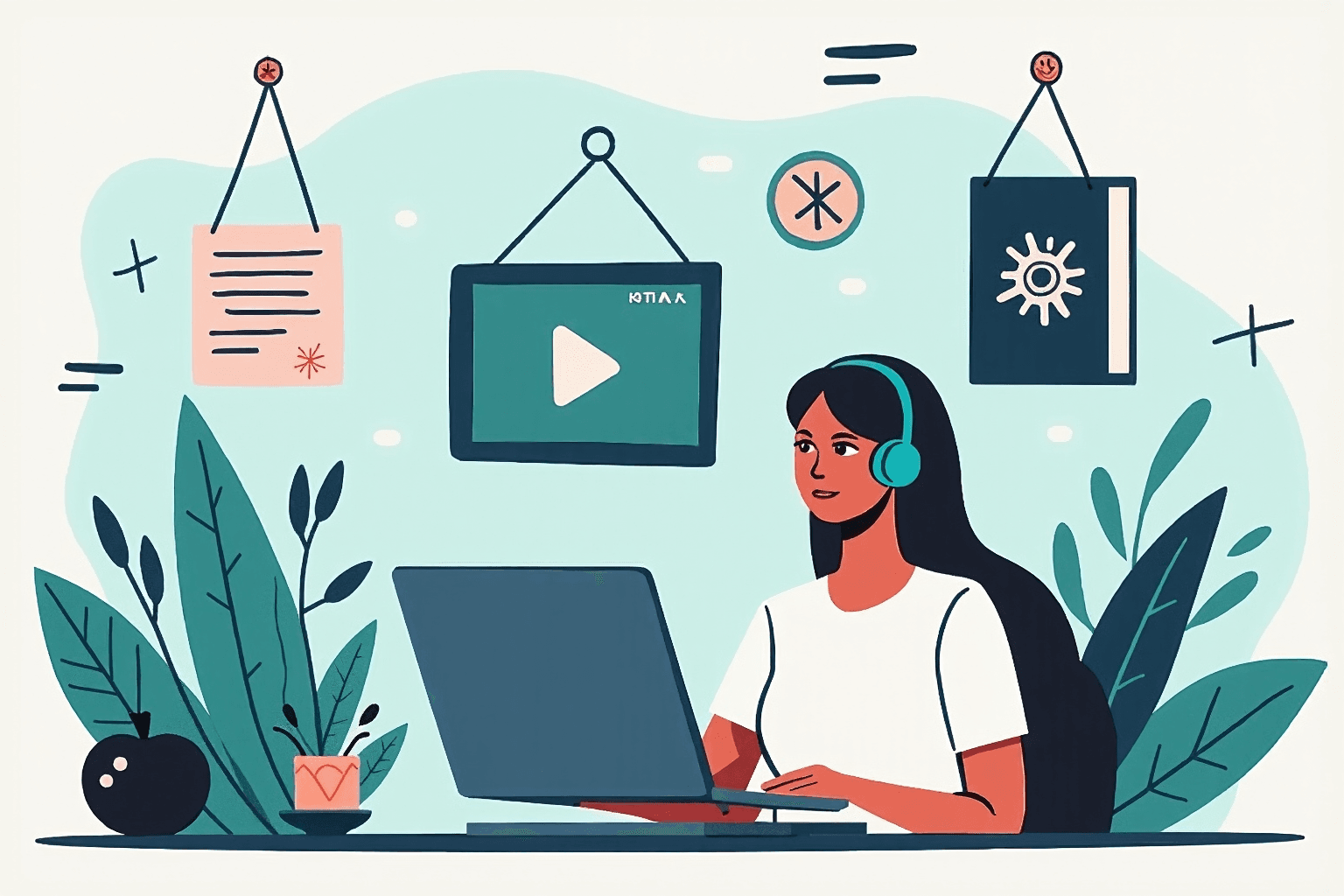Reclaiming Your Time: A Digital Detox Guide for Domestic Workers in 2025
In the bustling diplomatic households of 2025, where global connections are paramount, a silent epidemic is brewing: tech overuse. For domestic workers, often juggling demanding schedules and constant connectivity, the line between work and personal life blurs, leading to digital burnout. This isn’t just about reducing screen time; it’s about reclaiming your mental space and fostering a healthier relationship with technology. This guide provides actionable strategies for domestic workers in diplomatic households to implement a digital detox, improve well-being, and establish sustainable technology boundaries.
In today’s hyper-connected world, the allure of constant communication and readily available information can be particularly strong, leading to what many experts now term ‘tech addiction’. For domestic workers within diplomatic circles, this is often exacerbated by the demands of their roles, which can include managing complex schedules, coordinating international communications, and maintaining a seamless household operation, all often facilitated through digital devices. The expectation of near-constant availability can make disconnecting feel impossible, creating a cycle of digital dependency that negatively impacts mental health and overall well-being.
Prioritizing digital wellbeing, therefore, becomes not just a personal choice, but a professional imperative. The concept of a digital detox, therefore, offers a vital pathway to regaining control and enhancing both productivity and mental health. It’s not about completely abandoning technology, but rather about consciously creating boundaries and implementing screen time management strategies that allow for intentional engagement, rather than reactive consumption. Consider, for instance, setting specific times for checking emails related to household management and sticking to them rigorously.
Outside of those designated periods, resist the urge to constantly monitor your inbox. This simple act can significantly reduce anxiety and create more space for focused tasks and personal relaxation. Mindfulness plays a crucial role in a successful digital detox. Before reaching for your phone, pause and ask yourself: “Why am I doing this?” Are you genuinely seeking information, or are you simply filling a void? This simple question can bring awareness to mindless scrolling habits and prompt you to choose a more fulfilling activity, such as reading a book, practicing a hobby, or simply enjoying a quiet moment of reflection.
Cultivating this level of self-awareness is fundamental to breaking free from the grip of tech addiction and fostering a healthier, more balanced lifestyle. This also ties into the lifestyle aspect of digital detox, encouraging a shift towards more intentional and present living. Moreover, incorporating a social media detox into your overall digital wellbeing plan can yield significant benefits. Social media platforms are designed to be addictive, constantly vying for your attention with notifications, updates, and curated content.
Limiting your time on these platforms, or even taking a complete break for a designated period, can reduce feelings of FOMO (fear of missing out), improve self-esteem, and free up valuable time and mental energy. Consider replacing your social media scrolling with activities that nourish your mind and body, such as exercise, spending time in nature, or connecting with loved ones in person. These activities contribute to a more fulfilling and balanced lifestyle, ultimately enhancing your overall well-being and ability to manage technology boundaries effectively.
Understanding Digital Detox and Its Profound Benefits
Digital detox, in its simplest form, is a period of time during which an individual refrains from using electronic devices such as smartphones, computers, and social media platforms. The benefits are multifaceted and extend far beyond simply reducing screen time. Studies show that reducing screen time can significantly reduce stress levels (American Psychological Association, 2023). Improved sleep quality is another key advantage, as the blue light emitted from screens interferes with melatonin production, a hormone crucial for regulating sleep cycles (Harvard Medical School, 2024).
Furthermore, a digital detox can enhance focus and concentration, leading to increased productivity, and foster deeper, more meaningful real-life connections with family and friends. For domestic workers, this translates to improved efficiency during work hours and more fulfilling personal time. From a Health & Wellness perspective, a digital detox is an active step towards improving mental health. The constant barrage of notifications and the pressure to stay connected can contribute to anxiety and feelings of overwhelm.
By intentionally disconnecting, individuals create space for mindfulness and self-reflection, allowing them to reconnect with their inner selves and reduce the symptoms of tech addiction. This intentional disconnection can be particularly beneficial for those in demanding roles, offering a much-needed respite from the constant demands of their jobs. Consider incorporating activities like meditation or nature walks during your digital detox to further enhance its positive effects on your mental wellbeing. In the realm of Technology, understanding the impact of our devices is crucial.
A digital detox isn’t about demonizing technology, but rather about fostering a healthier relationship with it. It’s about recognizing how technology can be a tool for empowerment and connection, but also how it can contribute to distraction and isolation. By setting technology boundaries, we can regain control over our digital lives and use technology more intentionally. This might involve utilizing screen time management apps, muting notifications, or designating specific times for checking emails and social media.
The goal is to make conscious choices about how we engage with technology, rather than allowing it to dictate our lives. From a Lifestyle standpoint, incorporating regular digital detox periods can lead to a more balanced and fulfilling life. It allows us to rediscover hobbies and interests that may have been neglected due to excessive screen time. It encourages us to engage in activities that promote social connection and real-world experiences. For instance, instead of scrolling through social media, consider spending time with loved ones, pursuing a creative project, or exploring your local community.
By consciously shifting our focus away from the digital world, we can cultivate a richer and more meaningful life, fostering stronger relationships and a greater sense of purpose. Ultimately, a digital detox is a tool for reclaiming our time and attention, allowing us to live more fully in the present moment. Moreover, the benefits of a digital detox extend to improved productivity and enhanced work-life balance. By reducing distractions and improving focus, individuals can accomplish more in less time, freeing up valuable time for personal pursuits and relaxation. This is particularly relevant for domestic workers who often face long hours and demanding workloads. Implementing strategies for screen time management, such as setting specific work hours and avoiding email checking outside of those hours, can significantly improve efficiency and reduce stress. This proactive approach to digital wellbeing allows for a clearer separation between work and personal life, fostering a healthier and more sustainable lifestyle.
The Hidden Costs: Psychological and Physiological Impacts of Tech Overuse
Excessive technology use exacts a heavy toll on both our mental and physical well-being, impacting not only our minds and bodies but also our overall lifestyle. Psychologically, the relentless connectivity fostered by today’s digital landscape can fuel anxiety, depression, and a pervasive fear of missing out (FOMO). The incessant barrage of notifications and the sheer volume of information overload our brains, diminishing cognitive function and making it increasingly difficult to concentrate. For domestic workers in diplomatic households, this constant connectivity can be amplified by the pressure to remain perpetually available, blurring the lines between professional and personal time, and ultimately leading to chronic stress and burnout.
A 2024 study by the Global Wellness Institute found a direct correlation between increased screen time and decreased emotional regulation, particularly among individuals in high-pressure work environments. This highlights the crucial need for domestic workers to prioritize their digital wellbeing. Furthermore, the curated perfection often projected on social media platforms can exacerbate feelings of inadequacy and contribute to a distorted sense of reality. Comparing one’s life to the filtered and often unrealistic portrayals online can lead to negative self-perception and diminished self-esteem.
Physiologically, prolonged screen time can strain our eyes, trigger headaches, cause neck pain, and even contribute to carpal tunnel syndrome. The blue light emitted from digital devices disrupts our circadian rhythms, impacting sleep quality and potentially leading to insomnia. In a fast-paced world demanding constant attention, prioritizing restorative sleep is essential for maintaining both physical and mental health. The sedentary nature of excessive screen time also contributes to a more sedentary lifestyle, increasing the risk of obesity, cardiovascular disease, and other health problems.
Incorporating regular physical activity and mindful movement into daily routines is crucial to counteract these negative effects. Beyond the individual level, excessive technology use can strain interpersonal relationships. Face-to-face interactions are often replaced by virtual communication, leading to a decline in genuine connection and intimacy. Setting boundaries around technology use can create space for more meaningful interactions and strengthen relationships with family and friends. Recognizing these psychological, physiological, and lifestyle impacts is the first step toward reclaiming control over your digital habits and fostering a healthier, more balanced relationship with technology. Taking proactive steps to manage screen time, cultivate mindful technology practices, and prioritize real-world connections is essential for promoting overall well-being and creating a more fulfilling life, both personally and professionally.
Practical Strategies: Setting Realistic Tech Boundaries
Implementing a digital detox doesn’t require drastic measures or a complete severing of ties with technology. Instead, focus on small, achievable steps that gradually reshape your relationship with devices. A cornerstone of this approach is scheduling specific tech-free times each day. For example, designate mealtimes as sacred spaces devoid of screens, fostering mindful eating and genuine connection with those around you. Similarly, establishing a tech-free hour before bed allows your mind to unwind and prepare for restful sleep, crucial for both physical and mental health.
These small changes, consistently applied, can significantly reduce overall screen time and promote a healthier lifestyle. Creating device-free zones within your living space is another powerful strategy. Designate your bedroom as a sanctuary for sleep and relaxation, free from the distractions of phones, tablets, and computers. This reinforces the association between your bedroom and rest, making it easier to fall asleep and stay asleep. In diplomatic households, where work may often encroach on personal space, establishing these boundaries is particularly important.
Consider also creating a tech-free zone in a common living area to encourage face-to-face interactions and shared activities. This fosters a sense of community and strengthens relationships, contributing to overall well-being. To further limit exposure to distracting content, utilize website blockers and app timers. These tools, readily available on most smartphones and computers, can restrict access to time-wasting websites and social media platforms during designated periods. For instance, you might block social media apps during work hours to enhance productivity and focus.
Similarly, setting daily time limits for specific apps can help you become more aware of your usage habits and prevent mindless scrolling. This proactive approach to screen time management empowers you to regain control over your digital environment and prioritize activities that align with your goals and values. Effective notification management is also crucial for reclaiming your attention and reducing stress. Turn off non-essential alerts and batch email checks to specific times of the day.
Constant notifications disrupt focus and contribute to a sense of overwhelm. By minimizing these interruptions, you can create space for deeper work and more mindful engagement with your surroundings. Consider using features like “Do Not Disturb” or custom notification settings to filter out irrelevant alerts and prioritize important communications. This allows you to stay informed without being constantly bombarded by information, promoting a sense of calm and control. Communicating your technology boundaries to your employers and family members is essential for ensuring they are respected.
In the context of diplomatic households, this may involve having open and honest conversations about your need for downtime and the importance of disconnecting from work-related communications during specific hours. Setting clear expectations and boundaries can prevent misunderstandings and foster a more supportive work environment. Similarly, communicating your tech-free times to family members can encourage them to respect your need for personal space and contribute to a more balanced and harmonious home life. This proactive communication is key to creating a sustainable digital detox strategy that works for everyone involved.
Beyond these practical strategies, cultivating mindfulness is essential for long-term digital wellbeing. Explore mindfulness apps and techniques to cultivate self-awareness and manage the urge to constantly check your phone. Mindfulness practices, such as meditation and deep breathing exercises, can help you become more aware of your thoughts and feelings, allowing you to respond to urges and cravings with greater intention. By practicing mindfulness, you can develop a healthier relationship with technology and reduce your reliance on it for validation or distraction.
This inner awareness is a powerful tool for navigating the digital world with greater intention and purpose. Finally, remember that the goal is to create a sustainable and healthy relationship with technology, not to eliminate it entirely. Technology can be a valuable tool for communication, education, and entertainment. The key is to use it intentionally and mindfully, rather than allowing it to control your attention and consume your time. By implementing these practical strategies and cultivating self-awareness, you can create a digital detox plan that works for you and supports your overall well-being. Embrace the journey towards a more balanced and fulfilling life, free from the grip of tech addiction.
Sustaining Your Digital Detox: Long-Term Strategies and Support
Maintaining a healthy relationship with technology in 2025 and beyond requires ongoing effort and mindful adjustments. It’s a continuous process of self-regulation, not a one-time fix. Embrace mindfulness and self-awareness techniques to identify your personal triggers for mindless scrolling or feelings of tech overwhelm. Are you reaching for your phone out of habit, boredom, or a genuine need to connect? Recognizing these patterns is the first step towards conscious technology use. Journaling your daily tech habits and reflecting on your emotional state before and after using devices can be particularly insightful.
This self-awareness empowers you to make informed choices about when and how you engage with technology. Join online or in-person communities for support and accountability. Connecting with others who understand the challenges of maintaining a healthy digital life can provide valuable encouragement and practical tips. Sharing experiences and strategies in a supportive environment can reinforce your commitment to digital wellbeing. Look for groups specifically tailored to domestic workers, where you can discuss unique challenges and solutions within the context of your professional lives.
These communities can offer a sense of belonging and shared purpose, making the journey to digital wellness less isolating. Explore resources like the Digital Wellness Institute and Common Sense Media for evidence-based guidance and practical tools. These organizations offer valuable insights into the impact of technology on our well-being and provide actionable strategies for managing screen time, fostering healthy online habits, and promoting mindful technology use. Leverage their expertise to create a personalized digital detox plan that aligns with your specific needs and goals.
Remember that setbacks are a natural part of the process. Don’t be discouraged if you slip up; simply acknowledge it, learn from it, and recommit to your goals. Flexibility is key; adjust your strategies as needed. Perhaps your initial tech-free periods were too ambitious. Instead of aiming for hour-long breaks, start with 15-minute intervals and gradually increase the duration as you become more comfortable. The key is to be patient with yourself and celebrate your progress along the way.
Acknowledge small victories, such as resisting the urge to check social media before bed or successfully completing a tech-free evening. These small wins build momentum and reinforce positive habits. By taking proactive steps to manage your technology use, you can reclaim your time, improve your well-being, and create a more balanced and fulfilling life. This includes setting clear boundaries between work and personal life, especially for domestic workers in diplomatic households where constant connectivity can blur these lines.
Establish designated times for checking work-related emails and messages, and stick to them as much as possible. Outside of these designated times, resist the urge to engage with work-related technology. This separation is crucial for preserving mental and emotional energy and preventing burnout. In 2025, prioritizing digital wellbeing is not a luxury, but a necessity for thriving in an increasingly connected world. The evolving landscape of AI and immersive technologies will only amplify the need for conscious tech habits.
Embrace the change, set your boundaries, and prioritize your mental and physical health. This includes being mindful of the increasing presence of AI in our daily lives, from smart home devices to personalized recommendations. While these technologies can enhance our lives in many ways, it’s essential to use them consciously and avoid becoming overly reliant on them. Maintain a healthy balance between embracing technological advancements and preserving your autonomy and mental clarity. By cultivating a mindful approach to technology, you can navigate the digital landscape with intention and create a life of balance, focus, and well-being.



